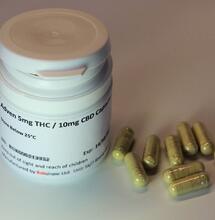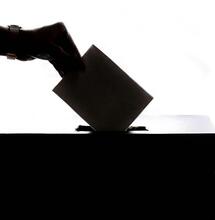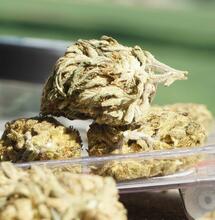Altered States

History & Culture
History & Culture
I have a question and it’s a big one. If recreational drugs are so bad, how come they make us so creative? Think about it: if it were not for the mind expanding substances used by musicians over the years your iPod would be pretty light. Art and literature would also be a bit patchy. Altered states have been responsible for some of mankind’s most amazing creations and could even be a reason why they’re illegal (but more about that later).
|
Alexander Dumas, author and member of Club des Hashischins |
Man by his very nature is an explorer, but the real frontier has always been within – and recreational drugs have been a means to take him there. We have always used psychoactive substances in search of creativity, from ancient cave paintings inspired by datura root, to the psychedelic art of the acid-soaked ’60s, though it’s something we just don’t talk about. Drugs have always been taboo; the drug use of artists is usually not mentioned in the historical record.
The Lakeland poets, revered by the establishment, were all avid users of laudanum, another name for opium. Coleridge, for example, wrote his famous unfinished poem Kubla Khan under its influence as well as The Rime of the Ancient Mariner. Sadly in later life he allowed the drug to take him over, so the lesson here is moderation.
Across the Channel in France, Alexander Dumas (author of The Count of Monte Cristo and The Three Musketeers) was a member of the Club des Hashischins. Delacroix and Baudelaire were also members and their work is held in the highest esteem. Back in London, Conan Doyle was writing about a detective called Sherlock Holmes, who frequently used a seven percent solution of cocaine. Drug use was more accepted during this period; even Queen Victoria was a Cannabis user.
Many philosophers and thinkers used psychoactive substances to access the ‘left-handed’ thinking that brings insight. Aleister Crowley, the notorious magi, used an array of substances in his study of the occult and wrote many books on the subject. Aldous Huxley, another mind traveler, wrote the ground breaking Doors of Perception after his psychedelic experiments, a book well before its time.
|
Jack Kerouac, beat poet |
The end of the last century gave us many writers who were considered outrageous for their indulgences, only later to be embraced as their genius was recognized. This was particularly common in the United States where Kerouac, Ginsberg and Burroughs were all dismissed and even persecuted, only later to receive the accolades they deserved. These are but a few of many.
The fact that drugs are illegal even helped create an art form, the Underground Comic. The weirdness of Robert Crumb and the anarchistic mayhem of Gilbert Shelton’s Fabulous Furry Freak Brothers are only the tip of a drug-inspired iceberg. Today hundreds of substance-fuelled comics fill the market.
Music; I saved the best for last! In this field the use of substances to get the creative juices flowing goes back further than you might think. Mozart and Beethoven were just wine and beer (ab)users, but Holst, Schumann, Berlioz and Mussorgsky all took creative substances at one point or another.
|
Keith Richards, doing it all and surviving |
By the beginning of the last century, alcohol and marijuana were the main influences upon music – particularly the development of blues and jazz. Musicians were far more candid about their substance use. Louis Armstrong openly admitted to smoking a little reefer and wrote songs about it. Of all the art forms, drugs have had the most influence on music, although it didn’t always have a happy ending. The intensely creative but sadly short life of Charlie Parker is an example. Many early musicians allowed themselves to fall under the spell of harder, more dangerous drugs and paid a high price. However, in their suffering they gave us music that touched our souls.
From the 1920s onward musicians used drugs simply to keep up the long hours of their trade. On the Chitlin' Circuit they often traveled with a bag of weed in the bus to help grease the creative wheels. The following decades it was weed, speed, coke and smack that drove the sound.
|
Samuel Taylor Coleridge, an avid opium user |
Then came the ’60s and suddenly musicians not using some kind of drug were in the minority. LSD and marijuana were so common they opened a creative floodgate. We all know the names: The Doors, The ’Dead, the Airplane and many more too numerous to mention. Over in Europe, The Beatles and The ’Stones were very obviously influenced by the substances they used, and look at the amount of music they created. Keith Richards proves that some can do it all and still survive.
I also want to mention Lenny Bruce and Bill Hicks, comics with insight that made us think. All these people have one thing in common; their use of psychoactive substances to access the source of creativity.
However, there’s a snake in the grass: responsible drug use entails education and moderation; excessive behavior always causes problems, whether it’s drugs, alcohol or even food.
Another interesting aspect to all this is that recent research has shown Cannabis has an effect on the pineal gland. This is the small pine cone-shaped gland seated between the two hemispheres of the brain, sometimes called ‘the third eye’. This is our connection to the universal consciousness and the source of our insight. The pineal gland also gives us the ability to ‘see through’ things (a sort of ‘bullshit detector’), which is why substances that activate this are not popular with the powers that be, who would prefer to keep us stupid and unquestioning.
Remember: more people die in one year alone from the legal drugs, tobacco and alcohol, than all the illicit drug deaths put together in the last hundred years. So, isn’t it about time we rehabilitated these substances – particularly Cannabis – and provide honest education that will allow us to make the right choice? Not all drugs are bad ('mmm kay?') and it’s time to recognize that fact.



